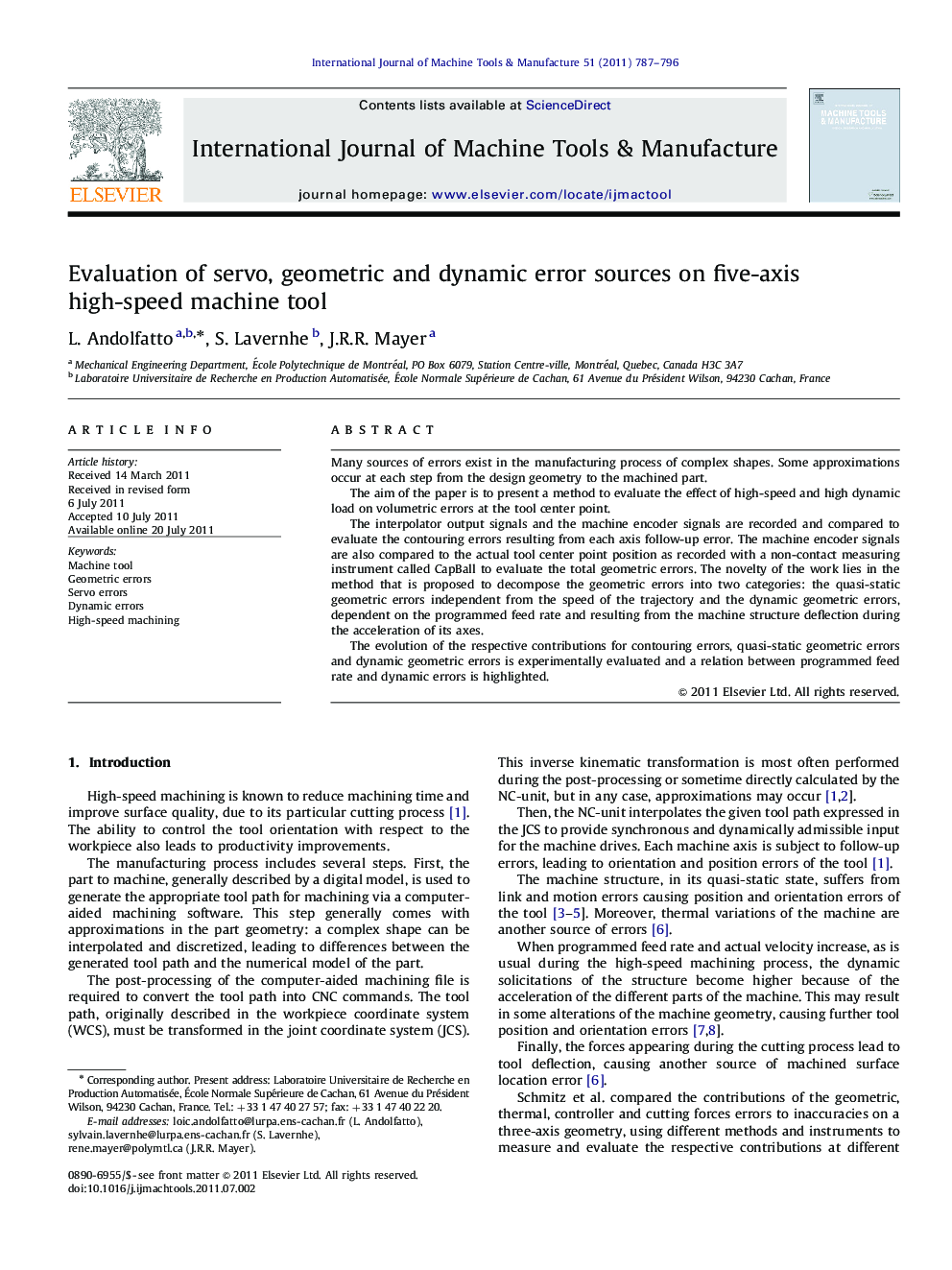| Article ID | Journal | Published Year | Pages | File Type |
|---|---|---|---|---|
| 781888 | International Journal of Machine Tools and Manufacture | 2011 | 10 Pages |
Many sources of errors exist in the manufacturing process of complex shapes. Some approximations occur at each step from the design geometry to the machined part.The aim of the paper is to present a method to evaluate the effect of high-speed and high dynamic load on volumetric errors at the tool center point.The interpolator output signals and the machine encoder signals are recorded and compared to evaluate the contouring errors resulting from each axis follow-up error. The machine encoder signals are also compared to the actual tool center point position as recorded with a non-contact measuring instrument called CapBall to evaluate the total geometric errors. The novelty of the work lies in the method that is proposed to decompose the geometric errors into two categories: the quasi-static geometric errors independent from the speed of the trajectory and the dynamic geometric errors, dependent on the programmed feed rate and resulting from the machine structure deflection during the acceleration of its axes.The evolution of the respective contributions for contouring errors, quasi-static geometric errors and dynamic geometric errors is experimentally evaluated and a relation between programmed feed rate and dynamic errors is highlighted.
► A method to separate geometric error of a five-axis high-speed milling machine is presented. ► Separation between quasi-static and dynamic geometric error is detailed. ► Experimental on-the-fly measurements are performed directly at the tool tip. ► Dynamic geometric error due to dynamic effects can become sizeable at high velocity. ► Peaks of dynamic error along the tool path are related to the linear interpolation format.
